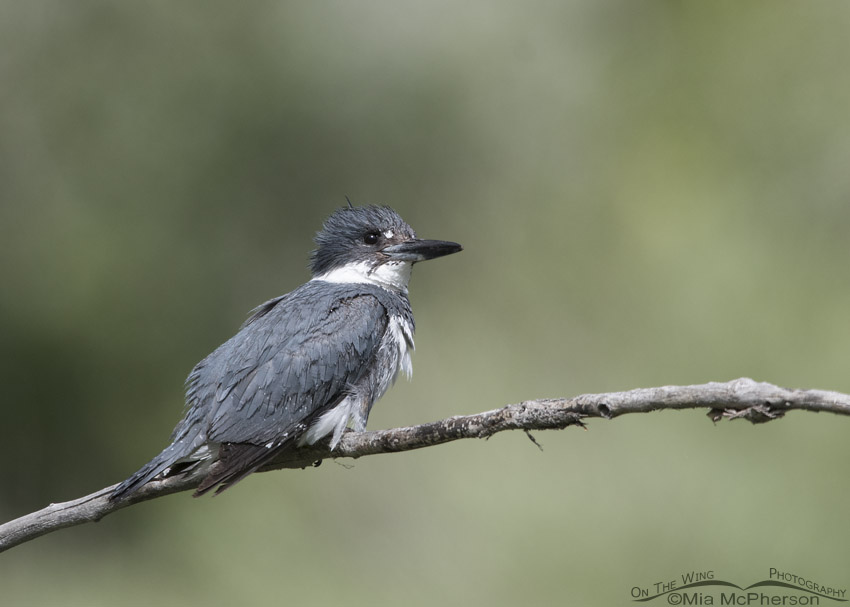 Male Belted Kingfisher perched on a thin branch – Nikon D500, f7.1, 1/1250, ISO 400, -0.3 EV, Nikkor 500mm VR with 1.4x TC, natural light
Male Belted Kingfisher perched on a thin branch – Nikon D500, f7.1, 1/1250, ISO 400, -0.3 EV, Nikkor 500mm VR with 1.4x TC, natural light
I photographed this male Belted Kingfisher last month as it perched on a thin branch at a small pond close to the Jordan River in Salt Lake County, Utah. There was another kingfisher in the area at the time but I was unable to obtain images of it. The Jordan River has some high, dirt banks in areas that the kingfishers use to dig burrows, lay eggs and rear their young so throughout the year I can see and hear these slate blue birds close to home.
Listen to the call of a Belted Kingfisher here. This recording also has the calls of Eastern Phoebes, Song Sparrows and Northern Flickers in it.
The Belted Kingfishers here in northern Utah will hang around all year as long as they have access to open water so they can fish for their prey.
A few Belted Kingfisher facts:
- Belted Kingfishers require clear open water and vertical open banks for habitat. They can be found near streams, rivers, ponds, lakes, estuaries and other marine habitat.
- Belted Kingfishers primarily eat fish but they also will eat crustaceans such as crayfish, mollusks, insects, amphibians, reptiles, small birds and small fruits like berries.
- Belted Kingfishers nest in burrows they dig, they lay 5 to 8 eggs which hatch in 22 to 24 days. Both sexes incubate and they are monogamous.
- A group of kingfishers can be called a “rattle” or “crown” of kingfishers.
Life is good.
Mia
Click here to see more of my Belted Kingfisher photos.


Love the collective names – and the sounds. thank you.
I love it when you add the sounds and I can listen as I read, it make me feel as if I am there. Beautify photo, I am happy you are still finding them this year with the river so high.
Lucky you. I find they are so elusive.